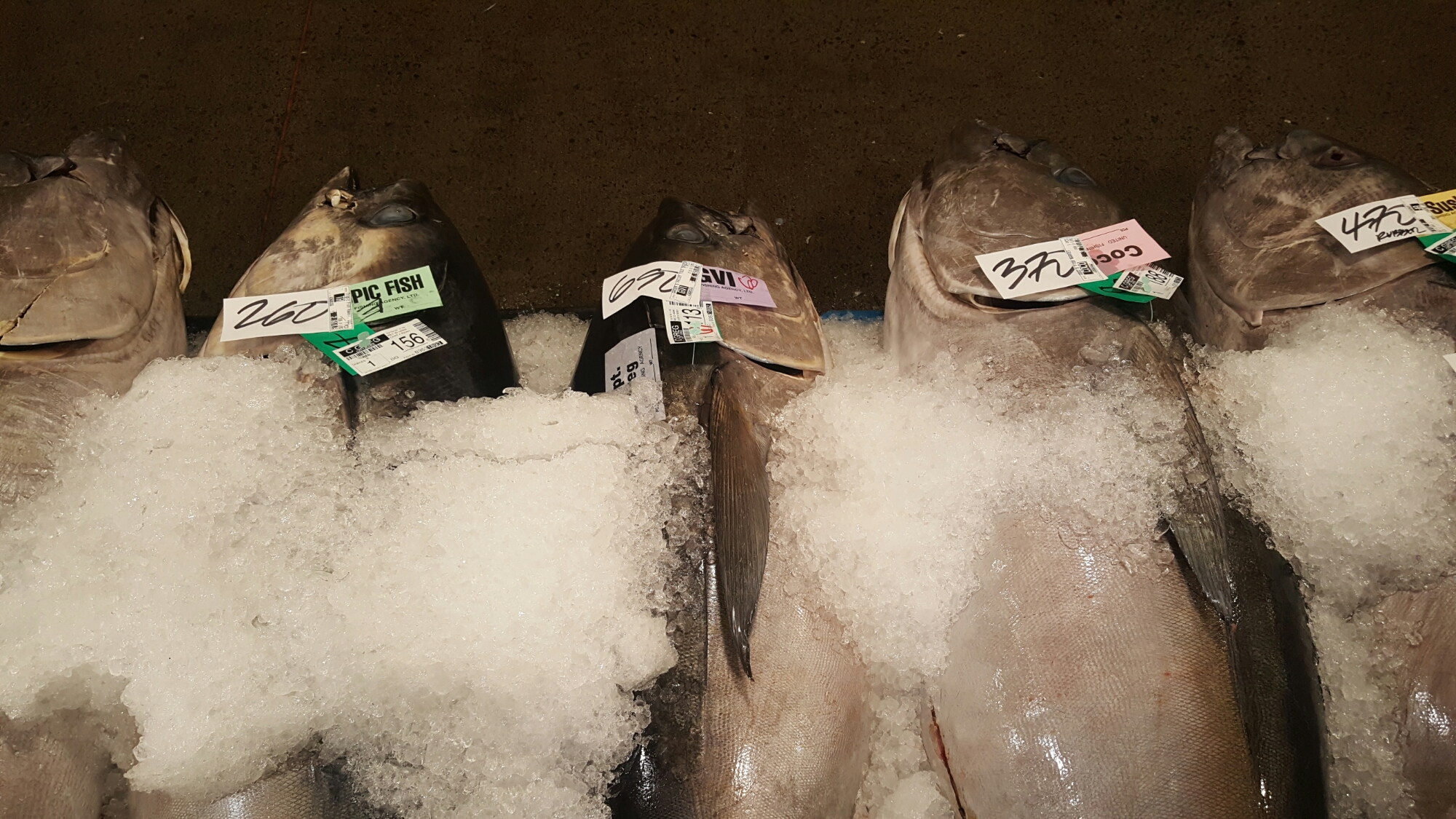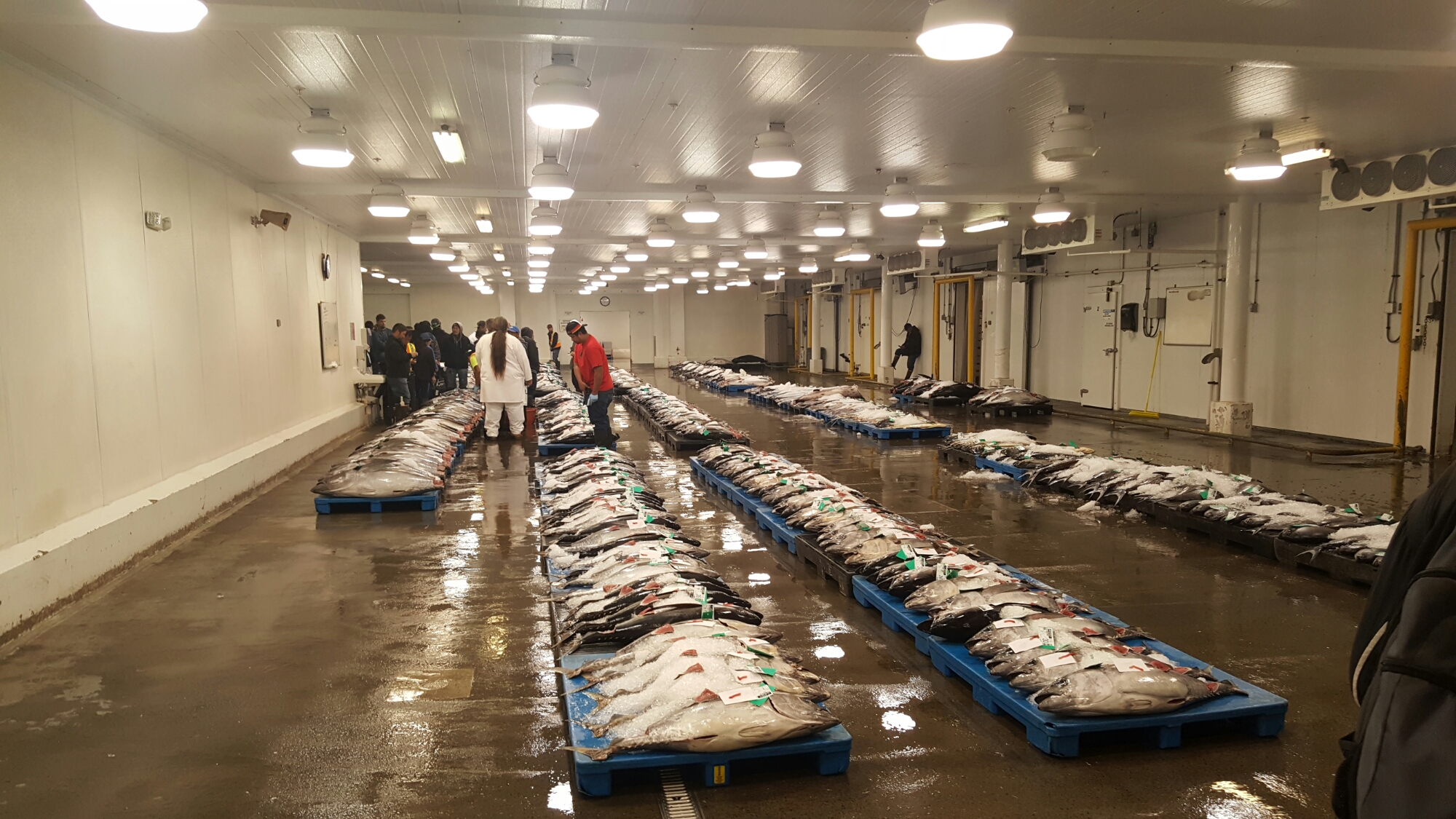Today we visited the only tuna auction in the United States with an estimated gross value of $100 million worth of fish (wholesale) passing through their doors each year. The auction was incorporated in 1952 and currently sells the catch from the 140 vessel-strong blue water fishing fleet based in Honolulu, Oahu. Each of these vessels is equipped with its own permitting license (ownership spans only about 20 families/companies, due to mom and pop ownership of multiple boats), allowing for biological resource extraction from multiple depths within the ocean. Any fishing must be beyond the 3 nautical mile limit of the state of Hawaii’s jurisdiction, with an average catch rate of 1.1% fish captured per set of gear deployed into the ocean. The fishermen are all independent small business owners who choose to partake in the auction we experienced near the end of Municipal Pier 38.
The fishers mainly focused on deep sea and pelagic species such as bigeye tuna (Thunnus obesus) and MahiMahi (Coryphaena hippurus). They must comply with a laundry list of regulations such as using circle hooks to prevent sea turtle bycatch. Twenty percent of the tuna longliners are randomly assigned to carry a NOAA-mandated federal observer. These observers confirm proper procedures and help to limit bycatch along while identifying any threatened or endangered species and monitoring overall fishery extraction efforts. One hundred percent of swordfish boats must carry a NOAA-approved observer. The auction itself was a very unique experience with different individuals bidding against one another to obtain the best fish at a competitive price. Sizes of fish we saw being auctioned generally ranged from about 0.6 to 1.5 meters.
Price is primarily determined by tissue quality and freshness of the catch and best deduced by the coloration, firmness, and oil content of the muscle. Also important is the ultimate intended use of the fish/consumers (e.g. fast food poke shops in the midwest or high end sushi joints catering the most discriminating Japanese clientele). Overall, the fish auction is an amazing event, highly regulated, and a great economic stimulus for the local economy. In the photos below you can see the surrounding boats, live auction, and of course our own tour guide. We also got to wear headsets to better hear our guide (Chris is pictured demonstrating them).











“We’re Coming In Loaded…”